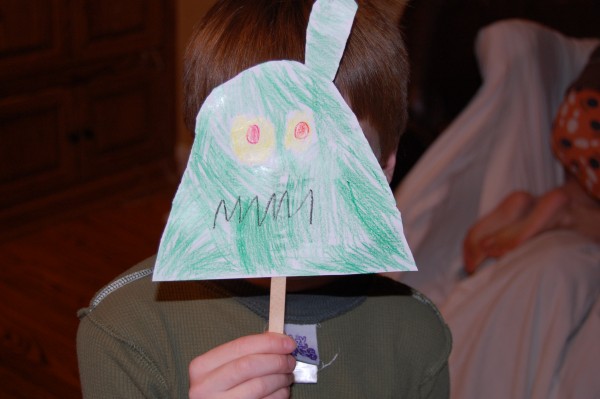10 Ways To Teach Your Kids To Give More And Want Less At Christmas
We would love for our kids to think less of themselves and more of others during the Christmas season (and all year long, really). Our job is to guide and model to them how this is possible. Culture is going to hailstorm them with messages of “It’s all about you.” Commercialism will create the monster named “I Want This” inside our children. Retailers will tantalize us with their displays and beckon our children to not just want but to desperately need what they are selling.
As parents we wonder how we can possibly fight against the way of culture. How do we create children who understand the meaning of Christmas and have hearts that desire to give more and receive less? It seems an overwhelming task.
When faced with what seems impossible, I like to look at the small piece of possible.
What can I do that sends the opposite message to my children than the message retailers are sending? Here’s a few ideas you might find helpful in growing kids who have hearts of giving in a season that tells them to get, get, and get some more.
- Don’t ask them to create a Christmas wish list – Don’t get mad at me. But your kids will give you enough hints that you can write down a few ideas without them spending hours creating a list of everything they could ever possibly want. This also keeps their expectations lower. When my kids have created lists, then don’t receive what is on their list, I’ve seen the disappointed looks. On the other hand, if they only drop hints, they don’t fully expect to get those items. It’s a bit of psychology I suppose. If we want our kids to think less of themselves and more of others, then we can make one simple change at Christmas by not asking them to think of what they want.
- Throw away the catalogues – One of my children loves to look at toy catalogues. He finds items he never knew existed then suddenly can’t live without them. I try to save him the anxiety and throw the catalogues out before they ever make it inside. If we don’t know it exists, we don’t want something we don’t need.
- Christmas Blessing List – Create a list that you post in a visible spot where members of the family keep a list of all the ways they have seen the gifts of Christmas. We define gifts of Christmas as the gifts of hope, love, peace, and joy. Where did we give one of these gifts, where did we see one of these gifts, or where did we receive one of these gifts. It’s a daily hunt for the blessings of Christmas. Training our kids to see beyond themselves and look for blessings. You could even make this a fun game that when the family reaches 100, you go out for ice cream. A little incentive for the littles (or bigs) to give a blessing more often than normal.
- Limit visits to stores – Does this sound impossible? It’s really not if we are a little creative with our shopping. I have begun to do most of my shopping online. When I need to visit a store, I try to arrange to go when my husband can be home with the kids, when they are in school, or swap babysitting with a friend. I realized when we hosted 2 orphans over the last couple of years how trips to stores seem to increase a child’s desire for more stuff. This should be common sense, but I didn’t realize it until I saw how these children would begin so content and the more stores we visited, the more stuff they began to ask for. They suddenly weren’t satisfied with what they had.
- Pick family missions or service projects – Our family prepares a meal to provide to a hospice patient on Christmas Day. We double the portion we are planning to prepare, package it up, and deliver on Christmas. It’s easy on Christmas Day to become absorbed in the gifts and festivities and lose sight of the ones suffering and grieving. Christmas isn’t joyous for everyone, but each of us can be a vehicle of sprinkling even the tiniest drops of joy into someone’s life. I’ll be posting ideas of family service projects in the coming weeks.
- Purchase gifts for others with their own money – If your child has their own money tucked away, it’s a good idea to have them use some of it to purchase a few small items for those they love. The Dollar Store is a great place they can get very small items inexpensively.
- Keep them busy serving – The more our kids serve, the less they think of themselves. The more I serve, the less focused I am on myself. Simple acts of kindness through the season will help loosen the hold of greed.
- Create family traditions – Traditions are what kids remember more than the gifts. It can be the simplest of moments, but the more time families spend creating memories and traditions, the less focus is given to the gifts. Kids will look forward to the events rather than the material gifts. The value of time and experience will grow larger in their hearts than gifts. Family traditions can be very small, and cost nothing or very little, but kids excitedly anticipate them each year.
- Set budgets and limits on gifts and communicate these to your children – I’m always surprised at the expectations of my children when compared to my own. I often forget that they create expectations based on fewer years than I have and often will place my own expectations on them. When I have communicated what our kids can expect at Christmas, they have never complained. If anything it has allowed them to let go of obsessing about what they will and won’t get. If they are told they will receive 5 gifts, they don’t expect more than that. If they are told they will receive one toy, a few clothing items, and a surprise item, they are more than ok with this. Sometimes when we are trying to decrease the size of Christmas, it is easier than we realize. We just have to communicate it to the kids.
- Gratitude Journal – A thankful heart produces contentment while leaving less room for discontentment, which is the root of many “wants”. The more we focus on what we have to be thankful for, the less we focus on what we don’t have. It’s a change in how we view life. We spotlight the thanks and the desires become dimmer.
Share your ideas with us. How does your family balance the commercialism of Christmas and cultivate hearts not consumed with material gifts?
[box] If you enjoyed today’s post, consider subscribing here to receive posts via email. You will receive a free Christmas ornament download that accompanies Seeking Christmas – Finding the True Meaning Through Family Traditions.[/box]















I love this list, especially #3. Tweeted it, and thanks!
Thanks so much Jennifer!
My husband and I had read an article about giving your children three gifts for Christmas because Jesus was given three… Even before we had our first child. So we have followed this guideline and our children know this is what we do so they don’t expect more! We also made a tradition of giving a gift to Baby Jesus each year on his birthday. We have a copy paper box wrapped in Happy Birthday paper under our tree … Each year we add a gift to this box. At first the kids made art projects etc. but now we do something like donate for a family to receive fruit trees as our gift putting a picture representing this gift in the box.
I appreciate your Christmas posts and look forward to more. We strive to live simply all year long and we struggle at Christmas not because of our children being selfish but extended family that doesn’t understand our hearts or respect our wishes. I am thankful that being part of a homeschooling family without cable tv, and infrequent shopping trips, our kids aren’t influenced by peers or media. 🙂